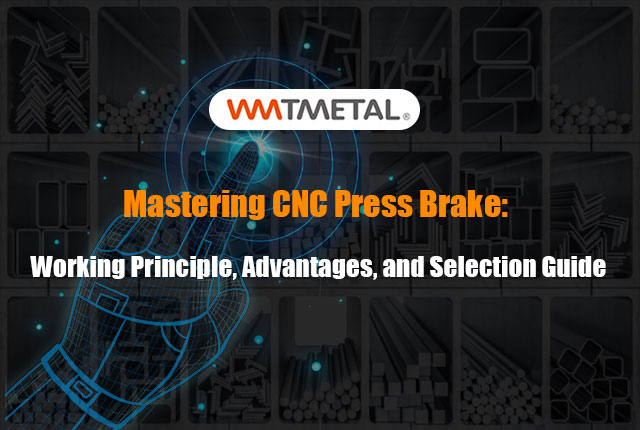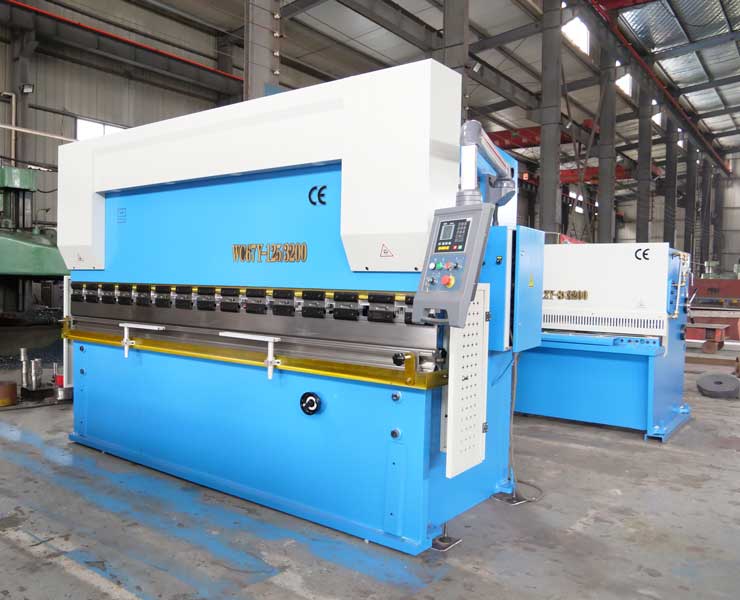WMT CNC Industrial Co., Ltd | All Rights Reserved.Design & Developed by VW Themes

CNC press brakes have revolutionized the metal fabrication industry with advanced capabilities and precision. In this article, we will delve into the definition of CNC press brakes, provide detailed insights into their working principle, and highlight their numerous advantages. Additionally, we will provide a comprehensive guide to help you choose the right CNC press brake machine for your specific needs and discuss critical differences between CNC and NC press brakes. By reading this extensive article, you will gain a thorough understanding of CNC press brakes and be able to make informed decisions.
A CNC press brake is an advanced mechanical equipment to bend metal sheets into various shapes and angles. It combines precision engineering, hydraulic systems, and advanced control technology to achieve accurate and efficient metal bending. CNC press brakes have widespread applications in automotive, aerospace, construction, and manufacturing industries.

CNC press brakes employ hydraulic power, computer control systems, and specialized tools to achieve high-precision metal bending. The process begins with the operator creating bending programs using dedicated software or inputting instructions directly into the machine’s control panel. Subsequently, the CNC system translates these instructions into precise movements of the machine’s feed and back gauge systems, ensuring accurate and repeatable bending operations. Hydraulic cylinders apply controlled force to the metal sheet, gradually forming the desired shape. The operator monitors the process and makes adjustments as necessary to ensure optimal results.
CNC press brakes offer several advantages over traditional manual or mechanical bending methods. Some key benefits include:
a. Improved Production Efficiency: CNC press brakes significantly enhance production efficiency through automated bending processes, reduced manual labor, and minimized setup time. The ability to store and recall bending programs enables quick and efficient setups.
b. Enhanced Accuracy and Repeatability: CNC control systems ensure precise positioning and consistent bending angles, producing high-quality finished products. Such precision is difficult to achieve consistently through manual or mechanical methods.
c. Reduced Human Errors: CNC press brakes eliminate the possibility of human errors associated with manual calculations and measurements. The digital control system ensures that the bending process aligns with the programmed specifications, reducing errors and waste.
d. Flexibility and Versatility: CNC press brakes offer a wide range of bending capabilities, enabling the easy realization of complex shapes and angles. Parameters such as bending length, bending angle, and back gauge position can be adjusted to accommodate various production requirements.
e. Improved Safety: CNC press brakes are equipped with advanced safety features such as light curtains and interlock systems, ensuring operator safety during the operation.
CNC press brakes have various features that enhance performance, precision, and convenience. Here are some standard features of CNC press brakes:
a. Automatic Backgauge System: An automatic backgauge system adjusts the backgauge position automatically based on the bending program, enabling exact bending processes.
b. Multi-Axis Control: CNC press brakes typically have multiple controllable axes, such as the Y-axis, X-axis, and R-axis, to facilitate more complex bending operations and polygonal bending.
c. Touchscreen Control Panel: A touchscreen control panel provides an intuitive interface, allowing operators to easily input commands, monitor the bending process, and adjust parameters.
d. Bending Angle Measurement System: Some CNC press brakes have precise bending angle measurement systems to ensure accuracy and consistency in bending results.
e. Automatic Tool Change: An automatic tool change system enables quick switching and adjustment of different bending tools to accommodate varying bending requirements.
Choosing the appropriate CNC press brake depends on several factors. Here are some recommendations and considerations:
a. Production Requirements: Determine your production needs, including the bending material, thickness, and length, as well as the desired bending capabilities and precision.
b. Machine Specifications: Familiarize yourself with the specifications and technical parameters of different CNC press brakes, including maximum bending force, maximum bending length, and the number of controllable axes.
c. Brand and Reputation: Opt for well-known brands of CNC press brakes to ensure product quality, technical support, and after-sales service.
d. Budget: Determine the CNC press brake that fits within your budget. Consider factors such as machine price, operating costs, and return on investment.
e. Customer Reviews: Refer to customer reviews and feedback to gain insights into their experiences. And satisfaction with specific CNC press brakes.
CNC press brakes are crucial equipment in metal fabrication, elevating production efficiency and product quality through automated and precise bending processes. This article provided detailed insights into the working principle, advantages, and selection guide of CNC press brakes. Understanding these key aspects will help you grasp the functionality and applications of CNC press brakes and guide you in choosing the right equipment. Selecting the appropriate CNC press brake can enhance production efficiency, reduce costs. And achieve high-quality bending results in your metal fabrication operations.